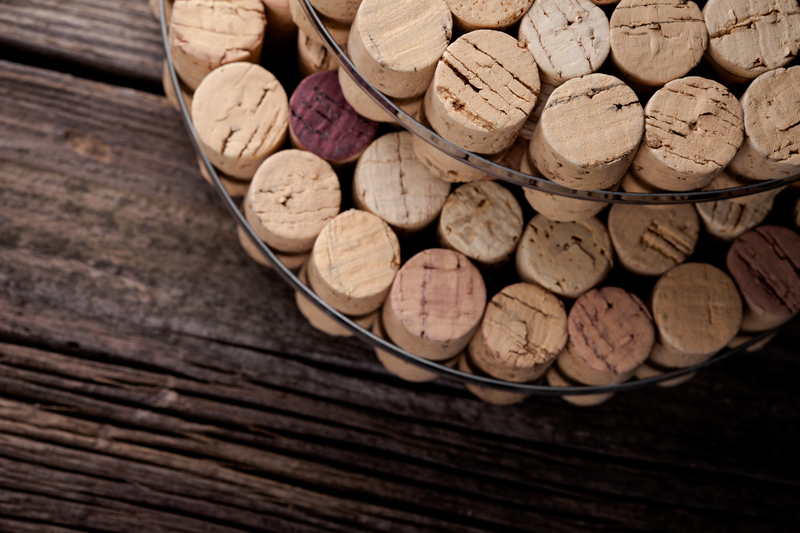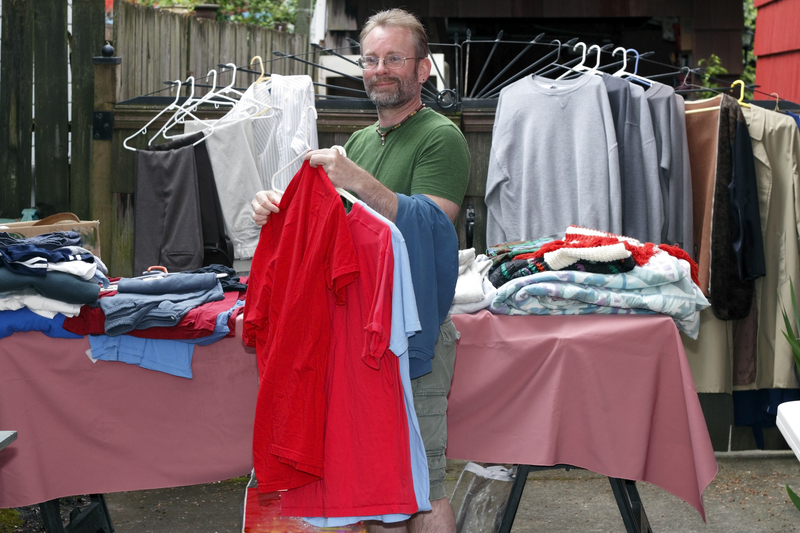From Refuse to Remarkable: Dazzling Upcycled Creations
Across the world, millions of tons of waste are generated daily, cluttering landfills and polluting our environment. Yet, out of this refuse arises a resounding wave of creativity and sustainability--upcycling. Upcycling goes beyond recycling, transforming discarded materials into functional and decorative treasures. In this comprehensive guide, we journey from the humble trash bin to the fabulous gallery, exploring the art, process, and impact of remarkable upcycled creations.
What Does Upcycling Mean?
To understand the magic of upcycled creations, let's first define the concept. Upcycling refers to the process of repurposing unwanted or discarded materials, such as old clothes, bottles, wood scraps, or furniture, and turning them into high-quality, value-added products. Unlike recycling--which typically breaks materials down for reuse--the upcycling process preserves or enhances the original item's value, resulting in something uniquely new and often more valuable.
- Upcycling vs. Recycling: Recycling involves breaking down materials to create new raw materials, while upcycling gives a new life to an item without degrading its composition.
- Upcycled products often have a story, blending function with creativity and environmental responsibility.
Environmental Importance of Upcycling
In an era where waste management is a pressing global concern, upcycling stands as an eco-friendly hero. Each remarkable upcycled creation diverts waste from landfills, reduces the demand for new raw materials, and saves energy.
- Reduces landfill use: Every upcycled lamp, chair, or art piece means one less item rotting in a dump.
- Minimizes resource consumption: Upcycling uses what already exists, requiring minimal fresh resources.
- Decreases pollution: Upcycling discourages incineration and landfill--two conventional but polluting disposal methods.

The Art and Ingenuity of Dazzling Upcycled Creations
Exceptional upcycled creations emerge at the intersection of necessity, vision, and artistry. From furniture to fashion, home decor to public art installations, upcycling transforms what was once deemed worthless into something both memorable and meaningful.
1. Upcycled Furniture: Old to Bold
Rustic wooden pallets become coffee tables, battered ladders are reborn as unique bookshelves, and outmoded doors transform into stylish headboards. With a little imagination, discarded furniture finds new strength:
- Pallet sofas and garden seats
- Suitcase side tables--vintage luggage stacked and fitted with modern legs
- Window frame mirrors--antique windowpanes upcycled as chic wall accents
2. Upcycled Fashion: Wearable Wonders
The fashion industry is notorious for waste, making it an excellent field for upcycling innovations. Designers and everyday crafters alike are spinning textile scraps, old denim, and even plastic bottles into remarkable upcycled clothing and accessories.
- Denim patchwork jackets crafted from old jeans
- Tote bags and backpacks made from coffee sacks or billboards
- Jewelry sculpted from electronic waste or metal cut-offs
3. Art from Scrap: From Refuse to Gallery
Junkyard treasures and recycled materials can become striking art pieces in the hands of a skilled creative. This area of upcycling brings communities together, raises awareness, and puts environmental topics in the limelight.
- Sculptures from automotive parts, scrap metal, or plastics
- Wall art using bottle caps, CD fragments, or broken ceramics
- Public installations--large-scale upcycled projects that beautify parks and city spaces
4. Upcycled Home Decor: Unique and Sustainable Spaces
Remarkable upcycled home decor turns bland spaces vibrant and sustainable. Repurposed jars as hanging lamps, tin cans as plant pots, and shutters as wall organizers are just a few ways to upcycle with flair:
- Tin can lanterns for patios and gardens
- Wine bottle lights or self-watering planters
- Pallet wood signs featuring personalized designs
How to Create Your Own Upcycled Masterpiece
Curious to join the upcycling revolution? Here's a step-by-step guide to transforming refuse into your own dazzling upcycled creation:
Step 1: Collect Materials
- Search for unwanted items at home, thrift stores, or recycling centers.
- Ensure materials are clean and safe to handle.
Step 2: Design and Plan
- Visualize what the finished upcycled creation could be--a lamp, table, planter, or piece of jewelry.
- Sketch ideas and research design inspiration online or on platforms like Pinterest and Instagram.
Step 3: Prepare and Assemble
- Gather necessary tools: saws, glue, paint, screws, etc.
- Cut, sand, or reshape materials as needed.
- Assemble with care; combine function and artistry.
Step 4: Personalize and Finish
- Paint, stain, or embellish your creation to reflect your style.
- Add protective coatings if needed for durability.
Step 5: Showcase Your Upcycled Work
- Share photos on social media or with friends and family.
- Consider selling your remarkable upcycled creations on digital marketplaces like Etsy.
The Impact: Sustainability Meets Style
Upcycled creations aren't just conversation starters--they're powerful agents for change. When you upcycle, you show that sustainability and style can go hand in hand. Here's how:
- Promotes conscious consumerism: Choosing or creating upcycled products encourages mindful, eco-friendly purchasing decisions.
- Fosters creativity and innovation: Upcycling inspires a mindset of problem-solving and innovation, breathing new life into overlooked items.
- Supports local economies: Many upcycled businesses are cottage or small-scale industries, boosting local employment and entrepreneurship.
Noteworthy Upcycling Brands and Initiatives
- TerraCycle: Transforms hard-to-recycle waste into practical and decorative items.
- Freitag: Renowned for bags and accessories made from upcycled truck tarps.
- Remark Glass: Produces stunning upcycled glassware from bottle waste.
- Community art projects: Murals and installations featuring upcycled materials to tell local stories and brighten shared spaces.
Tips for Successful Upcycling Projects
To ensure your projects are both dazzling and durable, keep these expert tips in mind:
- Select durable bases: Upcycle with materials that have plenty of life left.
- Mix materials carefully: Combining wood, metal, glass, and fabrics can yield spectacular results, but make sure they'll hold up together.
- Prioritize safety: Wear gloves, masks, and goggles when working with tools or potentially hazardous materials.
- Upcycle with purpose: Think about functionality and aesthetics before starting. Ensure your upcycled piece fits a real need or brings joy.
Commonly Upcycled Materials and Their Uses
| Material | Upcycled Uses |
|---|---|
| Glass Bottles and Jars | Vases, lamps, drinking glasses, garden edging |
| Wood Pallets | Furniture, planters, wall art, bed frames |
| Textiles (Clothes, Denim) | Bags, quilts, upholstery, fashion accessories |
| Plastic Containers | Storage, plant pots, organizers, decorative art |
| Cans and Metal Objects | Lighting, sculptures, pen holders, garden decor |
| Old Electronics | Jewelry, mosaic art, clocks, light fixtures |
Each of these materials offers endless possibilities for creating dazzling upcycled pieces.
Inspiring Real-Life Upcycled Success Stories
Around the World: Artisanal Brilliance
- Gadgets to Glamour in Africa: Artisans in Nigeria and Kenya have gained international recognition for transforming computer and electronic waste into elegant jewelry and accessories that sell worldwide.
- Urban Pallet Furniture in New York: Fresh, trendy cafes and co-working spaces are often furnished with chic, sustainable pieces made from salvaged wooden pallets.
- Car Tires to Planters in India: Old tires, once a blight on the landscape, now bloom as decorative planters in community gardens thanks to creative citizens and eco-minded city councils.
Home Crafters with Heart
- DIY Upcyclers: Countless inspirational stories are shared on social media, where individuals document their transformation of old doors into family dining tables, or wine corks into cottage-style notice boards.
- Upcycled Kids' Toys: Parents worldwide reinvent plastic bottles and boxes into fun, safe toys that spark creativity in the next generation.
How to Find and Support Upcycled Artists
- Purchase upcycled goods from local craft fairs, markets, or sustainability-focused retail shops.
- Explore online platforms like Etsy, Redbubble, or dedicated upcycling sites to discover unique, handcrafted upcycled products.
- Share and celebrate upcycled art on social media, helping independent creators reach wider audiences.

Future Trends in Upcycling: Next-Level Ingenuity
The future of remarkable upcycled creations is bright. As technology and design continue to evolve, so do the possibilities in upcycling.
- Smart upcycling: Integrating old electronics with modern tech to create innovative devices and interactive art.
- Biomaterial blending: Combining upcycled waste with biodegradable or renewable materials for even more sustainable outcomes.
- Designer collaborations: High-fashion labels increasingly embrace upcycled collections with global reach.
Conclusion: Unlocking the Dazzle Within Discard
From refuse to remarkable, upcycling is more than a trend--it's a movement. Each upcycled creation, from roadside sculpture to wearable artwork, stands as a testament to human ingenuity, resourcefulness, and environmental stewardship. Whether you're a professional designer, crafts enthusiast, or an eco-minded consumer, upcycling offers you the chance to transform waste into wonder, sparking joy while protecting our planet.
In a world hungry for change, let us champion dazzling upcycled creations as beacons of hope and possibility. The next time you look at something bound for the bin, pause--and imagine what it might become. The journey from refuse to remarkable is only limited by your creativity.
Ready to start your own upcycling adventure? Share your dazzling transformations online and inspire others to join the sustainable revolution!
```